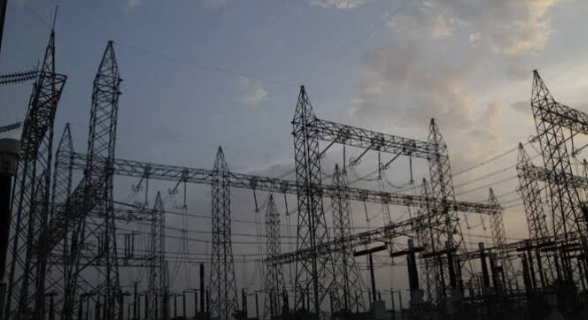On Tuesday, the National Bureau of Statistics (NBS) announced inflation rate rose in September, ending a two-month consecutive decline.
The decline started in July when inflation rate dropped to 33.40 percent — the first drop in 19 months.
The development followed 11 consecutive increases in the monetary policy rate (MPR) — which benchmarks interest rates — by the monetary policy committee (MPC) of the Central Bank of Nigeria (CBN) to curb inflation.
It was increased from 11.5 percent to 26.25 percent between May 2022 and May 2024.
Advertisement
According to the NBS consumer price index (CPI), the decline extended into August, with inflation rate dropping to 32.15 percent.
However, data from the NBS showed that several factors, such as food prices and house rents, drove the inflation rate back to an upward trajectory in September, with inflation rate rising to 32.70 percent.
On a year-on-year basis, the September inflation rate is 5.98 percentage points higher than the 26.72 percent recorded in the same month in 2023.
Advertisement
Also, on a month-on-month basis, the inflation rate in the review period stood at 2.52 percent, which is 0.30 percent higher than the 2.22 percent recorded in August.
Here’s a breakdown of the key takeaways from the report:
URBAN VS RURAL INFLATION
There is a notable difference between inflation in urban and rural areas.
Advertisement
Urban inflation in September 2024 was 35.13 percent, which is 6.46 percentage points higher compared to the 28.68 percent recorded in the corresponding period in 2023.
“On a month-on-month basis, the Urban inflation rate was 2.67% in September 2024, this was 0.28% points higher compared to August 2024 (2.39%),” NBS said.
“The corresponding twelve-month average for the Urban inflation rate was 33.95% in September 2024. This was 9.84% points higher compared to the 24.10% reported in September 2023.”
In the rural area, inflation was 30.49 percent last month, against the 24.94 percent recorded in September 2023 — a difference of 5.55 percentage points.
Advertisement
“On a month-on-month basis, the Rural inflation rate in September 2024 was 2.39%, up by 0.33% points compared to August 2024 (2.06%),” the bureau said.
“The corresponding twelve-month average for the Rural inflation rate in September 2024 was 29.76%. This was 7.97% higher compared to the 21.79% recorded in September 2023.”
Advertisement
FOOD INFLATION REMAINS A MAJOR CONCERN
Food inflation continues to be a critical driver of overall inflation, with the rate for September reaching 37.77 percent, up from 30.64 percent in the same month last year.
Advertisement
The increase in food prices is attributed to the rising cost of staples like rice, maize, beans, yam, and vegetable oil.
“The rise in Food inflation on a year-on-year basis was caused by increases in prices of the following items: Guinea Corn, Rice, Maize Grains, Beans, etc (Bread and Cereals Class),” NBS said.
Advertisement
“Yam, Water Yam, Cassava Tuber, etc (Potatoes, Yam & Other Tubers Class), Beer (Local and Foreign) (Tobacco Class), Lipton, Milo, Bournvita, etc (Coffee, Tea & Cocoa Class) and Vegetable Oil, Palm Oil, etc (Oil & Fats Class).”
On a month-on-month basis, food inflation also rose to 2.64 percent last month, higher than the 2.37 percent recorded in August.
RESIDENTS IN SOKOTO, GOMBE PAY MORE FOR FOOD
In September 2024, food inflation showed significant regional disparities.
On a year-on-year basis, the highest food inflation rates were recorded in Sokoto (50.47 percent), Gombe (44.09 percent), and Yobe (43.51 percent).
In contrast, Kwara (32.45 percent), Rivers (32.80 percent), and Kogi (32.83 percent) experienced the slowest year-on-year increases in food prices.
Month-on-month, Sokoto again led with the highest rise in food inflation (5.94 percent), followed by Taraba (5.76 percent) and Bayelsa (4.44 percent).
However, Kwara (0.88 percent), Cross River (1.29 percent), and Kogi (1.45 percent) saw the smallest month-on-month increases.
HOUSE RENTS, BUS FARES INCREASED
Core inflation, which excludes volatile items like food and energy, stood at 27.43 percent in September, up from 21.84 percent in the corresponding period in 2023.
The NBS report showed that the cost of rents and transportation, amongst others. is the reason for the increase.
“The highest increases were recorded in prices of the following items: Rents (Actual and Imputed Rentals for Housing Class),” the bureau said.
“Bus Journey intercity, Taxi Journey per drop, etc (under Passenger Transport by Road Class), Meal at a local Restaurant (Accommodation Service Class), Laboratory service, Consultation Fee of a medical doctor, etc (under Medical Services Class.”
On a month-on-month basis, core inflation was 2.10 percent, slightly down from 2.27 percent in August 2024.
ALL ITEMS INFLATION BY STATE
The report also highlights significant variations in all items inflation by state.
Bauchi recorded the highest inflation rate (44.83 percent), followed by Sokoto (38.74 percent) and Jigawa (38.39 percent).
In contrast, Delta (26.35 percent), Benue (26.90 percent), and Katsina (27.71 percent) experienced the slowest rise in inflation.
Add a comment











